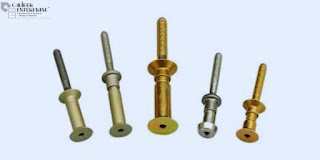What Are The Various Types Of Screws And Their Components?
What is a screw?
The screw is a tiny, pointed piece of metal with a long shaft and helical threads all around it that is used to twist objects together to form connections. Using tools like hammers or screwdrivers, you can join things together with the help of screws.
These have numerous uses and come in different shapes and sizes. Although screws are frequently spherical and available in a variety of shapes, including flat, short, and long, it will be difficult to discern between them or learn about them for the project due to their variety.
The ridges that encircle the cylinder and help hold the screw in place are called threads. The screw head has different layouts depending on the driving device to make sure the force is evenly distributed. The shank is the smooth area right behind the dome on some screws. Screws can be coated to make them more durable and long-lasting. They are available in a variety of materials, including stainless steel and aluminium.
The head of the screw can be manufactured by Calibre Enterprise in a number of configurations to allow the use of various tools, such as a flat-head screwdriver or a Phillips head screwdriver.
What are the parts of a Screw?
As a Screw Manufacturer in India and Fasteners Manufacturers in Ludhiana, our screws have a sturdy build.
Drive:
These components are also known as screw heads. The goal is to create a glove into which the screwdriver tip can fit in order to turn the screw. There are many different sizes and shapes of drives. This suggests that having a variety of screwdriver heads in a personal toolkit is preferable.
Head:
The screw's principal component, located on top of it, is the head. The screw head has the ability to tighten and loosen screws of various sizes. It is often wider than the thread and shank. It is in a position that can be modified using a screwdriver or wrench.
Threaded shank:
The threads and helical grooves of the screw are placed in this tapered segment. In this place, the screw secures the joining bodies.
Non-threaded shank:
The screw's longer, unthreaded part is positioned here. Some screws may be missing this component. It is usually at the top where the wood screw's point can pull into the wood like a standard screw.
Thread:
A ridge or equal section on the outside or inside of a spiral or helix-shaped cylinder or cone. The pitch refers to the distance between each thread that is important. Some screws have short and tightly spaced lines. And some have broader, more significant threads.
Thread length:
A thread’s length is either entire or partial. As a result, both full and partial screw threads are provided.
Tip:
This is the bottom of the screw, where it enters the object being screwed into. Screwing by the joining bodies is usually beneficial. Without a tip, it becomes a bolt that requires a pre-existing hole. However, other screws lack this section, leaving the threads visible.
Crest:
The crest is the main component of the thread, whether it is positioned on the inside or outside of the screw. The valley of the thread is at the crest.
Screw thickness:
The screw's minor and major diameters, which compose its thickness, are measured. The primary diameter is the diameter at the thickest part of the thread, and the nominal thickness is the diameter at the screw's base.
Product Source: Screw supplier in India

.jpg)

.jpg)
Comments
Post a Comment